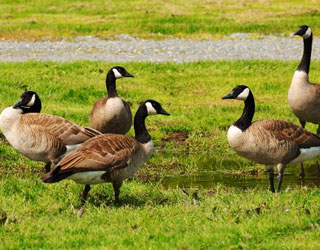


At a Glance, One of the finest bird parks in the world, Harike Bird Sanctuary also known as the Harike wetland that offers protection to faunal species as well. Nesting indigenous water- birds as well as migratory water birds and waterside birds, this sanctuary is also inhabited by Jackles cats and deers.
Harike Wildlife Sanctuary is open throughout the year; still, the ideal visiting months are from August-November for resident breeding birds and October- February for migrant birds. The tour starts at 9 AM, it is around 1-hour journey from Amritsar to Harike Wetland (Bird Sanctuary).
It is a guided tour and upon reaching Harike, you go for a nature walk where you will be welcomed by the Siberian birds, it is 2 hours guided walking tour on the bank of the lake. The best time to visit Harike is from Oct-Mar. This is the season when you see the birds.
Harike, also known as Hari-Ke-Pattan, is situated at the confluence of the Beas and Sutlej rivers. The wetland ecosystem, covering an area of 4,100 hectares, was created following the construction of the Harike barrage across the Sutlej River and is an internationally recognized Ramsar site. During winters, thousands of migratory birds arrive from the Himalayas, Siberia, making it the best time of the year to visit it. Some of the regular visitors sighted in the sanctuary include the large cormorant, purple moorhen, bar-headed goose, white-winged tern, tufted duck, and the white-eyed pochard. The wetlands are also home to several species of turtles, snakes, and fish. The rare Indus River Dolphin can also be seen here. This beautiful aquatic mammal, considered extinct in East Punjab for decades, confirmed its return to Punjab waters. Given its endangered status, it is a privilege to sight these beautiful creatures.
Harike is located on the plains of Punjab. This marshy land has a very warm climate. Summers are invariably hot and winters are very cold. The temperature ranges from a maximum of 44°C in summers (May and June) to around 3°C in winters (November to February). Carry light cotton during summers and woolens during winters. Rainfall is less but sufficient.
The term 'Ghana' means dense, referring to the thick forest, which used to cover the area. The principal vegetation types are tropical dry deciduous trees, intermixed with dry grassland in areas where the forest has been tainted. Apart from the artificially managed marshes; much of the area is covered by medium-sized trees and shrubs.
The major attractions of tourists visiting the park are the numerous migratory birds, which come from as far away as Siberia and Central Asia and spend their winters in Bharatpur, before returning to their breeding grounds. Migratory birds at Bharatpur bird sanctuary include several species of Cranes, Pelicans, Geese, Ducks, Eagles, Hawks, Shanks, Stints, Wagtails.